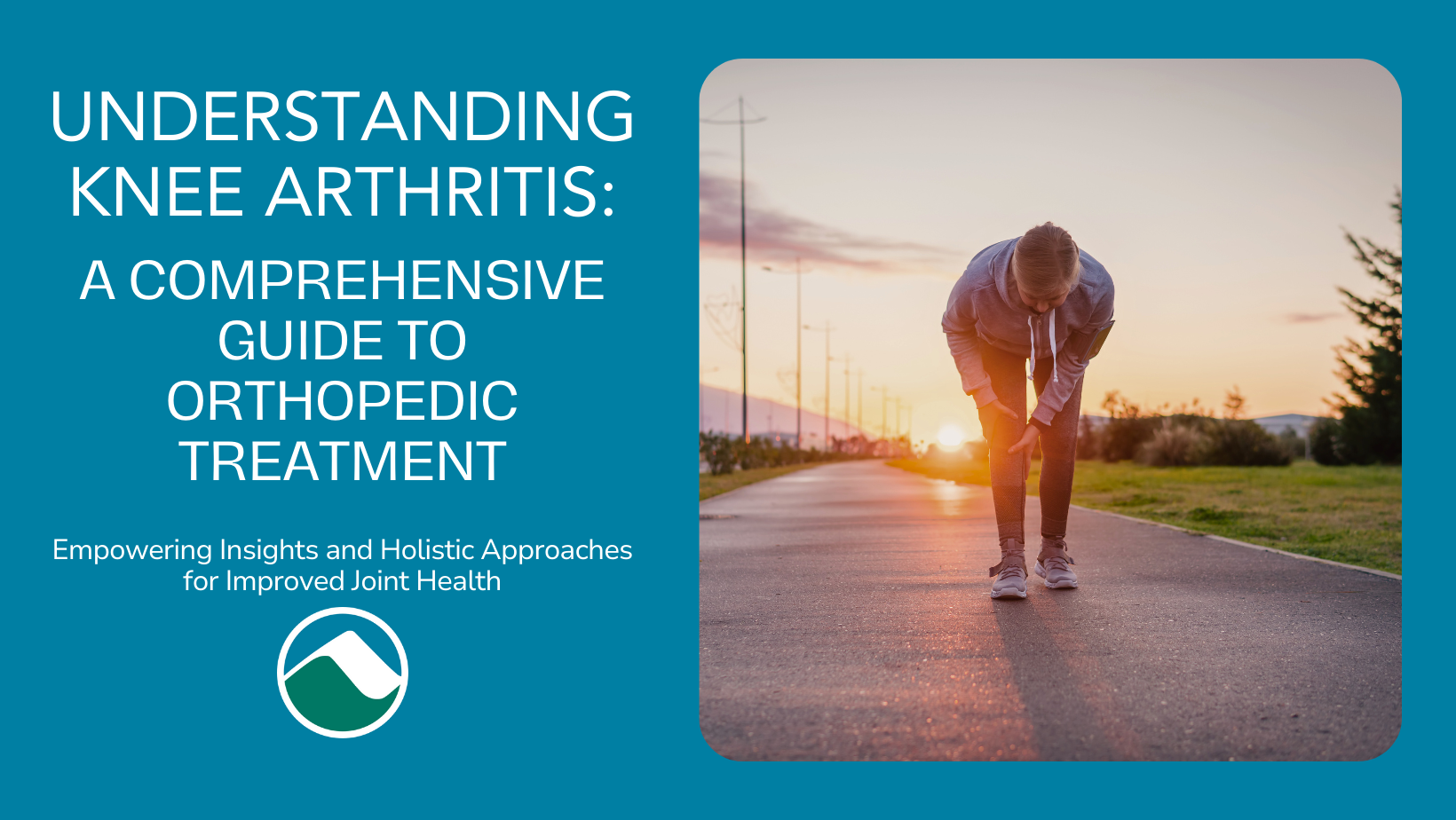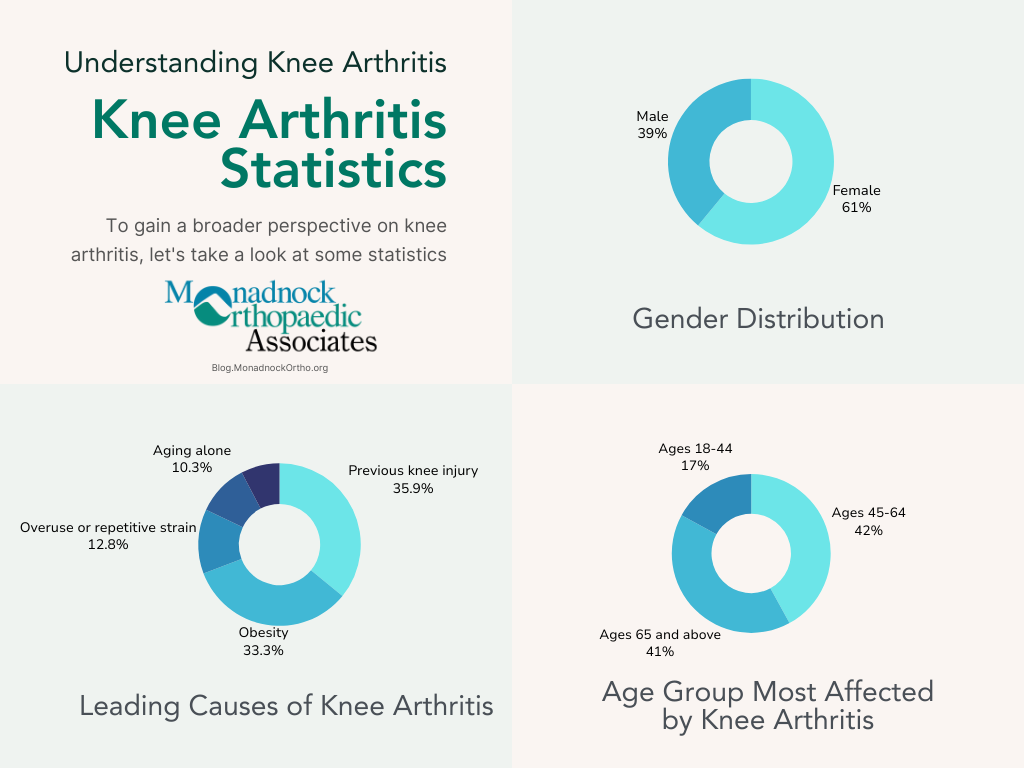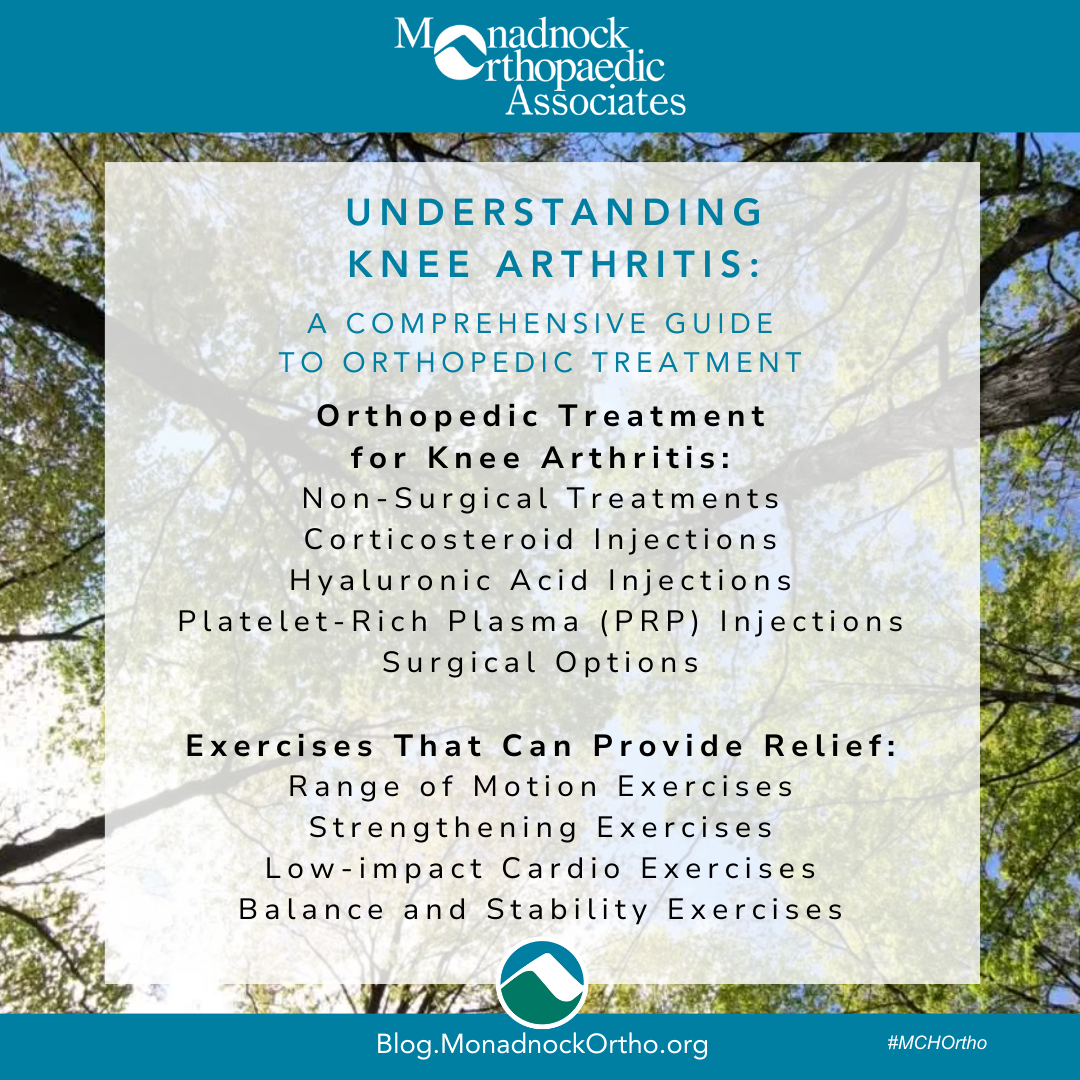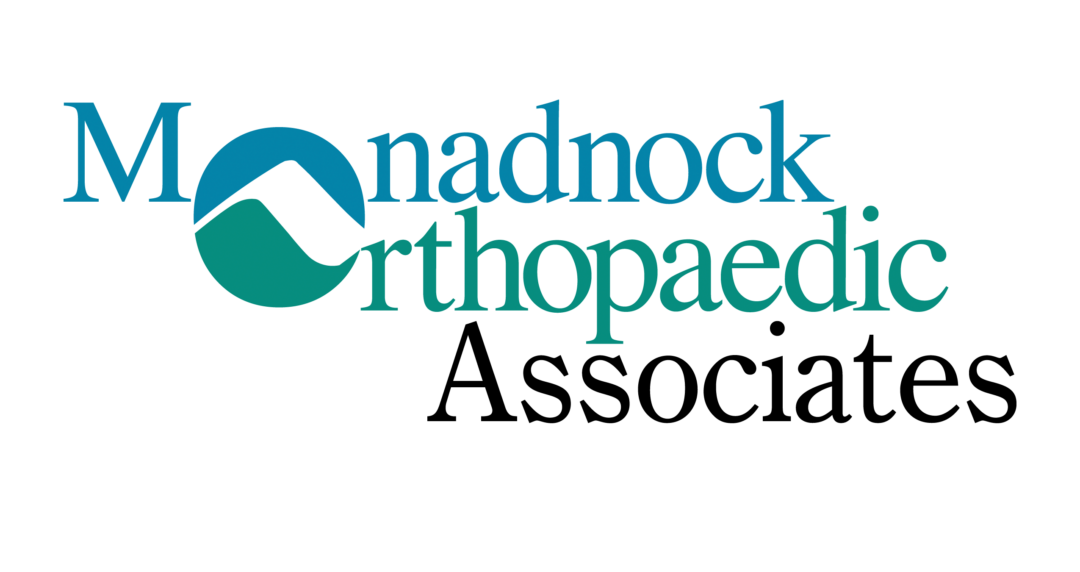Understanding Knee Arthritis


Knee arthritis is a widespread condition that affects millions of people worldwide. Osteoarthritis (OA) is the most prevalent cause of this joint disease and a leading source of chronic pain and disability in the United States. Knee OA accounts for more than 80% of the osteoarthritis’ total burden and affects at least 19% of American adults aged 45 y and older. It can cause pain, stiffness, and reduced mobility, significantly impacting an individual’s quality of life. In this blog, we will explore the different types of knee arthritis, its causes, symptoms, and various orthopedic treatments available to alleviate pain and restore functionality.
Common Types of Knee Arthritis:
Osteoarthritis (OA):
-
- The most common form of knee arthritis, affecting primarily adults over 45 years old.
- Occurs due to age, misuse, ‘wear and tear’, resulting in the breakdown of the joint’s cartilage over time. It is a progressive condition.
- Symptoms include joint pain, stiffness, and limited range of motion.
Rheumatoid Arthritis (RA):
-
- An autoimmune disease where the body’s immune system mistakenly attacks its own tissues, including the knee joints.
- Can affect individuals of any age, causing chronic inflammation, pain, swelling, and joint deformity.
Post-Traumatic Arthritis:
-
- Develops following a knee injury or trauma, such as a fracture or ligament tear.
- Over time, the damaged joint surfaces can lead to arthritis symptoms and deterioration.
Orthopedic Treatment for Knee Arthritis:
-
- Non-Surgical Treatments
Include a variety of options such as medications: Non-steroidal anti-inflammatory drugs (NSAIDs) can help alleviate pain and reduce inflammation and Tylenol can be effective against mild to moderate daily pain. Physical Therapy and specific exercises and stretches can improve joint flexibility and muscle strength and reduce disability from arthritis. Assistive Devices, for instance the use of braces, canes, or walkers can provide support and reduce stress on the affected knee. Maintaining a healthy weight can relieve stress on the knee joint and slow down the progression of arthritis.
-
- Corticosteroid Injections
Are a powerful anti-inflammatory medication injected directly into the knee joint and they can help reduce pain and swelling by blocking inflammation. Multiple injections can be administered over time, but the frequency may vary for each individual due to their other medical conditions.
-
- Hyaluronic Acid Injections
Also known as viscosupplements, are injections to provide lubrication and cushioning to the knee joint and can improve joint movement, reduce friction, joint crepitus and pain. Multiple injections may be required over time for optimal results, and in most cases can be repeated every 6 months if needed.
-
- Platelet-Rich Plasma (PRP) Injections
Are an experimental treatment that uses concentrated platelets from the patient’s own blood to aid in healing and tissue regeneration. Theoretically they can stimulate the body’s natural repair mechanisms and potentially reduce inflammation.
-
- Surgical Options
Include minimally invasive arthroscopy where a small camera is inserted into the knee joint to remove damaged cartilage, wash out debris or repair minor joint abnormalities. Partial Knee Replacement: In cases where arthritis affects only one compartment of the knee, the damaged portion is replaced with a prosthetic implant leaving the remaining natural portions intact while a total Knee Replacement affects the entire knee joint and replaces them with synthetic implants.

Knee Arthritis Statistics:
To gain a broader perspective on knee arthritis, let’s take a look at some statistics:
Age Group Most Affected by Knee Arthritis:
-
- Ages 45-64: 42%
- Ages 65 and above: 41%
- Ages 18-44: 17%
Gender Distribution:
-
- Females: 61%
- Males: 39%
Leading Causes of Knee Arthritis:
-
- Previous knee injury/ including sprain, trauma, surgery: 28%
- Obesity: 26%
- Overuse or repetitive strain knee movements: 10%
- Aging alone: 8%
- Genetic factors: 6%
Knee arthritis is a prevalent condition that can significantly impact an individual’s daily life. Understanding the different types of knee arthritis and available orthopedic treatments can help individuals make informed decisions in managing their symptoms. It is important to consult with a qualified healthcare professional to determine the most suitable treatment approach based on each person’s specific needs. Lastly, lifestyle modifications, such as regular exercise, maintaining a healthy weight, and managing overall joint health, can contribute to long-term knee health and reduce the risk of developing knee arthritis.
Knee arthritis can cause discomfort and limited mobility, but regular exercise can help alleviate symptoms and improve joint function.
Exercises That Can Provide Relief
Here are some exercises that can provide relief for individuals with knee arthritis:
Range of Motion Exercises:
Perform these exercises to maintain or improve the flexibility and range of motion in your knee joint:
-
- Heel slides: Lie on your back with your legs extended. Slowly slide your heel towards your buttocks, bending your knee. Hold for a few seconds, then slide your foot back to the starting position. Repeat 10-15 times.
- Straight leg raises: Sit on a chair with your back straight. Extend one leg in front of you and hold for a few seconds. Lower it back down and repeat with the other leg. Aim for 10-15 repetitions on each leg.
Strengthening Exercises:
Strengthening the muscles around the knee joint can help provide support and stability. These exercises can be done using resistance bands, weights, or simply relying on bodyweight:
-
- Wall squats: Stand with your back against a wall, feet shoulder-width apart. Slowly slide down the wall into a squatting position, as if sitting on an imaginary chair. Hold for a few seconds, then push through your heels to return to a standing position. Repeat 10-15 times.
- Step-ups: Use a step or sturdy platform. Step up with one leg, then bring the other leg up. Step back down and repeat with the other leg. Start with a lower step and gradually increase the height as you gain strength. Aim for 10-15 step-ups on each leg.
Low-impact Cardio Exercises:
Engaging in low-impact aerobic exercises can help improve cardiovascular health and maintain overall fitness without putting excessive stress on the knees:
-
- Swimming: Swimming or water aerobics are excellent options as they provide resistance and support in a buoyant environment. Aim for 30 minutes of swimming or water exercises at least three times a week.
- Cycling: Whether indoors on a stationary bike or outdoors on a level surface, cycling is a joint-friendly aerobic exercise. Start with a comfortable pace for 10-15 minutes and gradually increase the duration and intensity.
Balance and Stability Exercises:
These exercises promote better balance and reduce the risk of falls, which can be especially important for individuals with knee arthritis:
- Standing on one leg: Stand near a wall or chair for support if needed. Lift one foot off the ground and balance on the other leg. Hold for 30 seconds, then switch legs. Aim for two sets on each leg.
- Tai Chi: This gentle and low-impact exercise combines slow, flowing movements with deep breathing and relaxation techniques. Regular practice can improve balance, flexibility, and reduce joint stiffness.
Remember to consult with your healthcare provider or a physical therapist before starting any exercise regimen, especially if you have severe arthritis or other underlying health conditions. They can offer guidance on the most suitable exercises for your specific needs and ensure proper technique to prevent further injury. Start gradually and listen to your body, adjusting the intensity or range of motion as needed. Regular exercise, combined with other treatment options, can significantly improve knee arthritis symptoms and enhance overall quality of life.
Stay well and take care of your orthopedic health!
Dr. Shawn P. Harrington, MD, FAAPMR


Why Choose Monadnock Orthopaedic Associates?
Our board-certified arthritis specialists combine decades of experience with training from prestigious institutions like the Mayo Clinic. We offer comprehensive orthopedic care using advanced techniques and technology, all while providing personalized attention. At Monadnock Orthopaedic Associates, we’re committed to getting you back to pain-free living as quickly as possible with expert, compassionate care tailored to your unique needs. Choose us for expert care that’s close to home, where your well-being is our highest priority.
 Monadnock Orthopaedic Associates
Monadnock Orthopaedic Associates
Monadnock Community Hospital
Bond Wellness Center Suite 200
458 Old Street Road
Peterborough, NH 03458
Phone: 603-924-2144
Fax: 603-924-3993
Array
(
[section_title] =>
[section_text] =>
[posts_selection] => auto_taxonomy_terms
[section_posts] => Array
(
[0] => WP_Post Object
(
[ID] => 39853
[post_author] => 9192204
[post_date] => 2025-04-02 17:45:32
[post_date_gmt] => 2025-04-02 21:45:32
[post_content] =>
[post_title] => Fall Prevention for Older Adults: Tips to Stay Safe and Independent
[post_excerpt] =>
[post_status] => publish
[comment_status] => closed
[ping_status] => closed
[post_password] =>
[post_name] => fall-prevention-tips-for-seniors
[to_ping] =>
[pinged] =>
[post_modified] => 2025-05-19 13:58:28
[post_modified_gmt] => 2025-05-19 17:58:28
[post_content_filtered] =>
[post_parent] => 0
[guid] => https://monadnockcommunityhospital.com/nutrition-tips-for-seniors-healthy-aging-copy/
[menu_order] => 0
[post_type] => post
[post_mime_type] =>
[comment_count] => 0
[filter] => raw
)
[1] => WP_Post Object
(
[ID] => 40417
[post_author] => 9192204
[post_date] => 2025-04-01 14:12:40
[post_date_gmt] => 2025-04-01 18:12:40
[post_content] =>
[post_title] => Age-Friendly Health System at Monadnock: Compassionate Care for Older Adults
[post_excerpt] =>
[post_status] => publish
[comment_status] => closed
[ping_status] => closed
[post_password] =>
[post_name] => age-friendly-health-system
[to_ping] =>
[pinged] =>
[post_modified] => 2025-06-27 14:20:29
[post_modified_gmt] => 2025-06-27 18:20:29
[post_content_filtered] =>
[post_parent] => 0
[guid] => https://monadnockcommunityhospital.com/?p=40417
[menu_order] => 0
[post_type] => post
[post_mime_type] =>
[comment_count] => 0
[filter] => raw
)
[2] => WP_Post Object
(
[ID] => 39802
[post_author] => 9192204
[post_date] => 2025-02-26 13:53:23
[post_date_gmt] => 2025-02-26 18:53:23
[post_content] =>
[post_title] => Nutrition for Seniors - Expert Tips for Healthy Aging
[post_excerpt] =>
[post_status] => publish
[comment_status] => closed
[ping_status] => closed
[post_password] =>
[post_name] => nutrition-tips-for-seniors-healthy-aging
[to_ping] =>
[pinged] =>
[post_modified] => 2025-05-19 13:58:17
[post_modified_gmt] => 2025-05-19 17:58:17
[post_content_filtered] =>
[post_parent] => 0
[guid] => https://monadnockcommunityhospital.com/heart-health-tips-5-steps-for-a-healthy-heart-copy/
[menu_order] => 0
[post_type] => post
[post_mime_type] =>
[comment_count] => 0
[filter] => raw
)
[3] => WP_Post Object
(
[ID] => 39144
[post_author] => 9192204
[post_date] => 2024-12-05 07:30:17
[post_date_gmt] => 2024-12-05 12:30:17
[post_content] =>
[post_title] => Skiing Strengthening: Get Your Body Ready for a Safe and Enjoyable Ski Season
[post_excerpt] =>
[post_status] => publish
[comment_status] => closed
[ping_status] => closed
[post_password] =>
[post_name] => skiing-strength-training-exercises
[to_ping] =>
[pinged] =>
[post_modified] => 2025-05-19 14:05:06
[post_modified_gmt] => 2025-05-19 18:05:06
[post_content_filtered] =>
[post_parent] => 0
[guid] => https://monadnockcommunityhospital.com/common-sports-injuries-copy/
[menu_order] => 0
[post_type] => post
[post_mime_type] =>
[comment_count] => 0
[filter] => raw
)
[4] => WP_Post Object
(
[ID] => 39139
[post_author] => 9192204
[post_date] => 2024-11-11 07:44:47
[post_date_gmt] => 2024-11-11 12:44:47
[post_content] =>
[post_title] => Common Sports Injuries Treated at Monadnock Orthopaedic Associates
[post_excerpt] =>
[post_status] => publish
[comment_status] => closed
[ping_status] => closed
[post_password] =>
[post_name] => common-sports-injuries
[to_ping] =>
[pinged] =>
[post_modified] => 2024-10-15 10:39:17
[post_modified_gmt] => 2024-10-15 14:39:17
[post_content_filtered] =>
[post_parent] => 0
[guid] => https://monadnockcommunityhospital.com/preventing-sports-injuries-in-athletes-copy/
[menu_order] => 0
[post_type] => post
[post_mime_type] =>
[comment_count] => 0
[filter] => raw
)
[5] => WP_Post Object
(
[ID] => 39126
[post_author] => 9192204
[post_date] => 2024-10-28 07:23:34
[post_date_gmt] => 2024-10-28 11:23:34
[post_content] =>
[post_title] => Common Causes of Joint Pain and How to Manage It Effectively
[post_excerpt] =>
[post_status] => publish
[comment_status] => closed
[ping_status] => closed
[post_password] =>
[post_name] => common-causes-joint-pain
[to_ping] =>
[pinged] =>
[post_modified] => 2025-01-16 09:34:38
[post_modified_gmt] => 2025-01-16 14:34:38
[post_content_filtered] =>
[post_parent] => 0
[guid] => https://monadnockcommunityhospital.com/effective-neck-pain-management-copy/
[menu_order] => 0
[post_type] => post
[post_mime_type] =>
[comment_count] => 0
[filter] => raw
)
[6] => WP_Post Object
(
[ID] => 38596
[post_author] => 9192204
[post_date] => 2024-10-14 07:46:45
[post_date_gmt] => 2024-10-14 11:46:45
[post_content] =>
[post_title] => Preventing Injuries During Exercise: Tips and Strategies for Preventing Sports Injuries
[post_excerpt] =>
[post_status] => publish
[comment_status] => closed
[ping_status] => closed
[post_password] =>
[post_name] => preventing-sports-injuries-in-athletes
[to_ping] =>
[pinged] =>
[post_modified] => 2024-09-30 12:07:10
[post_modified_gmt] => 2024-09-30 16:07:10
[post_content_filtered] =>
[post_parent] => 0
[guid] => https://monadnockcommunityhospital.com/guide-to-preventing-youth-sports-injuries-copy/
[menu_order] => 0
[post_type] => post
[post_mime_type] =>
[comment_count] => 0
[filter] => raw
)
[7] => WP_Post Object
(
[ID] => 39081
[post_author] => 9192204
[post_date] => 2024-09-18 18:10:52
[post_date_gmt] => 2024-09-18 22:10:52
[post_content] =>
[post_title] => Video: Fitness for Life Seminar Video
[post_excerpt] =>
[post_status] => publish
[comment_status] => closed
[ping_status] => closed
[post_password] =>
[post_name] => fitness-for-life-seminar-video-2024
[to_ping] =>
[pinged] =>
[post_modified] => 2025-05-19 14:06:19
[post_modified_gmt] => 2025-05-19 18:06:19
[post_content_filtered] =>
[post_parent] => 0
[guid] => https://monadnockcommunityhospital.com/opioid-free-seminar-video-2024-copy/
[menu_order] => 0
[post_type] => post
[post_mime_type] =>
[comment_count] => 0
[filter] => raw
)
[8] => WP_Post Object
(
[ID] => 38604
[post_author] => 9192204
[post_date] => 2024-09-16 08:16:40
[post_date_gmt] => 2024-09-16 12:16:40
[post_content] =>
[post_title] => Orthopedic Care for Young Athletes: Injury Prevention and Recovery
[post_excerpt] =>
[post_status] => publish
[comment_status] => closed
[ping_status] => closed
[post_password] =>
[post_name] => orthopedic-care-for-common-injuries
[to_ping] =>
[pinged] =>
[post_modified] => 2024-11-15 11:47:36
[post_modified_gmt] => 2024-11-15 16:47:36
[post_content_filtered] =>
[post_parent] => 0
[guid] => https://monadnockcommunityhospital.com/?p=38604
[menu_order] => 0
[post_type] => post
[post_mime_type] =>
[comment_count] => 0
[filter] => raw
)
[9] => WP_Post Object
(
[ID] => 38609
[post_author] => 9192204
[post_date] => 2024-08-19 08:56:22
[post_date_gmt] => 2024-08-19 12:56:22
[post_content] =>
[post_title] => Sports Injuries: Your Path to Recovery with Orthopedic Care
[post_excerpt] =>
[post_status] => publish
[comment_status] => closed
[ping_status] => closed
[post_password] =>
[post_name] => sports-injury-recovery-with-orthopedic-care
[to_ping] =>
[pinged] =>
[post_modified] => 2024-11-15 11:48:37
[post_modified_gmt] => 2024-11-15 16:48:37
[post_content_filtered] =>
[post_parent] => 0
[guid] => https://monadnockcommunityhospital.com/?p=38609
[menu_order] => 0
[post_type] => post
[post_mime_type] =>
[comment_count] => 0
[filter] => raw
)
[10] => WP_Post Object
(
[ID] => 38028
[post_author] => 9192204
[post_date] => 2024-08-05 08:00:09
[post_date_gmt] => 2024-08-05 12:00:09
[post_content] =>
[post_title] => Minimally Invasive Discectomy Benefits | Herniated Disc Treatment
[post_excerpt] =>
[post_status] => publish
[comment_status] => closed
[ping_status] => closed
[post_password] =>
[post_name] => benefits-minimally-invasive-discectomy
[to_ping] =>
[pinged] =>
[post_modified] => 2025-04-10 17:00:10
[post_modified_gmt] => 2025-04-10 21:00:10
[post_content_filtered] =>
[post_parent] => 0
[guid] => https://monadnockcommunityhospital.com/?p=38028
[menu_order] => 0
[post_type] => post
[post_mime_type] =>
[comment_count] => 0
[filter] => raw
)
[11] => WP_Post Object
(
[ID] => 38211
[post_author] => 9192204
[post_date] => 2024-07-28 10:41:21
[post_date_gmt] => 2024-07-28 14:41:21
[post_content] =>
[post_title] => Senior Health Services at Monadnock Community Hospital
[post_excerpt] =>
[post_status] => publish
[comment_status] => closed
[ping_status] => closed
[post_password] =>
[post_name] => senior-health-at-mch
[to_ping] =>
[pinged] =>
[post_modified] => 2025-04-03 19:18:35
[post_modified_gmt] => 2025-04-03 23:18:35
[post_content_filtered] =>
[post_parent] => 0
[guid] => https://monadnockcommunityhospital.com/?p=38211
[menu_order] => 0
[post_type] => post
[post_mime_type] =>
[comment_count] => 0
[filter] => raw
)
)
[posts_limit] => 12
[post_type] => post
[taxonomy] => tag
[terms] => harrington, knee, seniors
[section_id] => post-grid-5
)
